Abstract
Phenanthrene, a low-molecular-weight polycyclic aromatic hydrocarbon, was incubated with water samples from various reservoir systems in Tennessee to evaluate the potential for significant polycyclic aromatic hydrocarbon degradation by the indigenous microbial populations. Biodegradation was assessed by comparison of total polycyclic aromatic hydrocarbon substrate recovery in degradation flasks relative to sterile control flasks. During 1977 field studies, the mean phenanthrene biodegradation was approximately 80% after a 4-week incubation. Within a given habitat, 45% of the total variability in phenanthrene biodegradation was attributable to the physical, chemical, and microbiological site characteristics examined. Polycyclic aromatic hydrocarbon degradation was directly related to the historical environmental pollution of the sampling sites examined, the length of biodegradation assessment, temperature, and the molecular size of the polycyclic aromatic hydrocarbon substrate.
Full text
PDF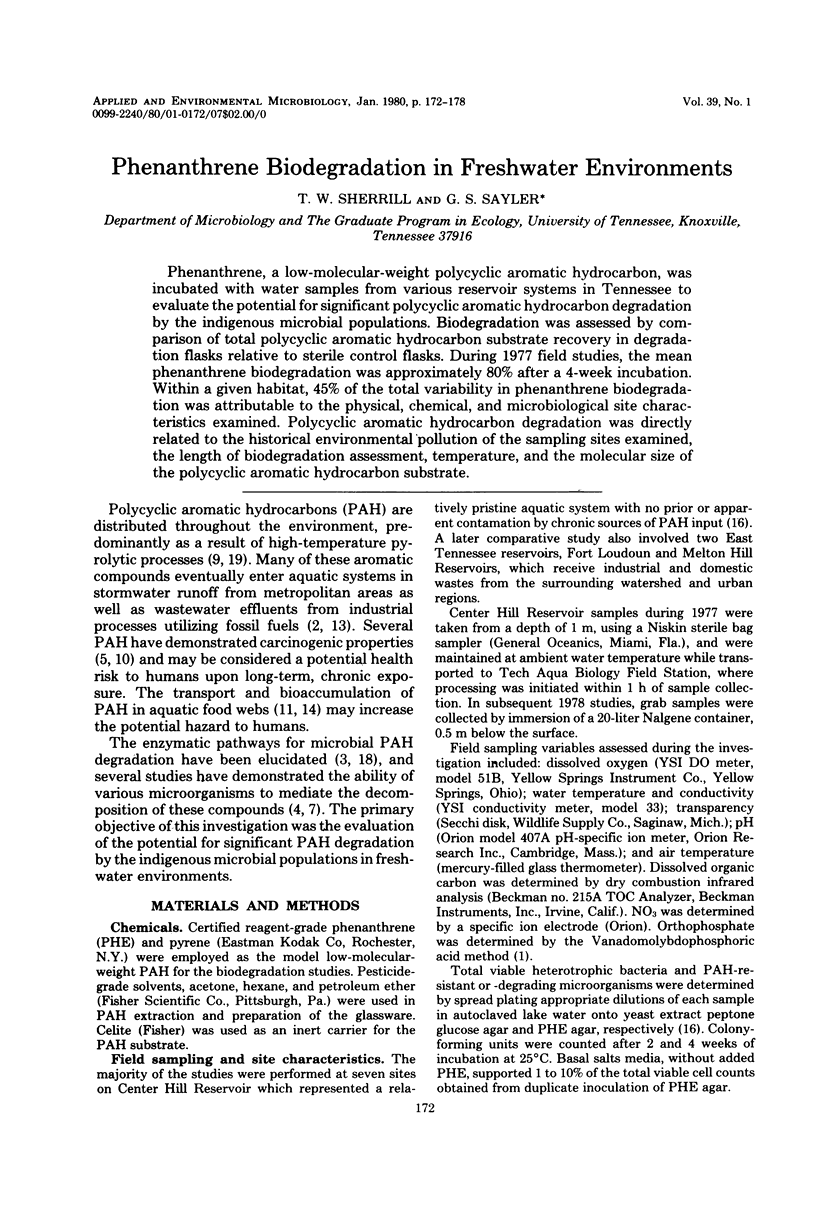
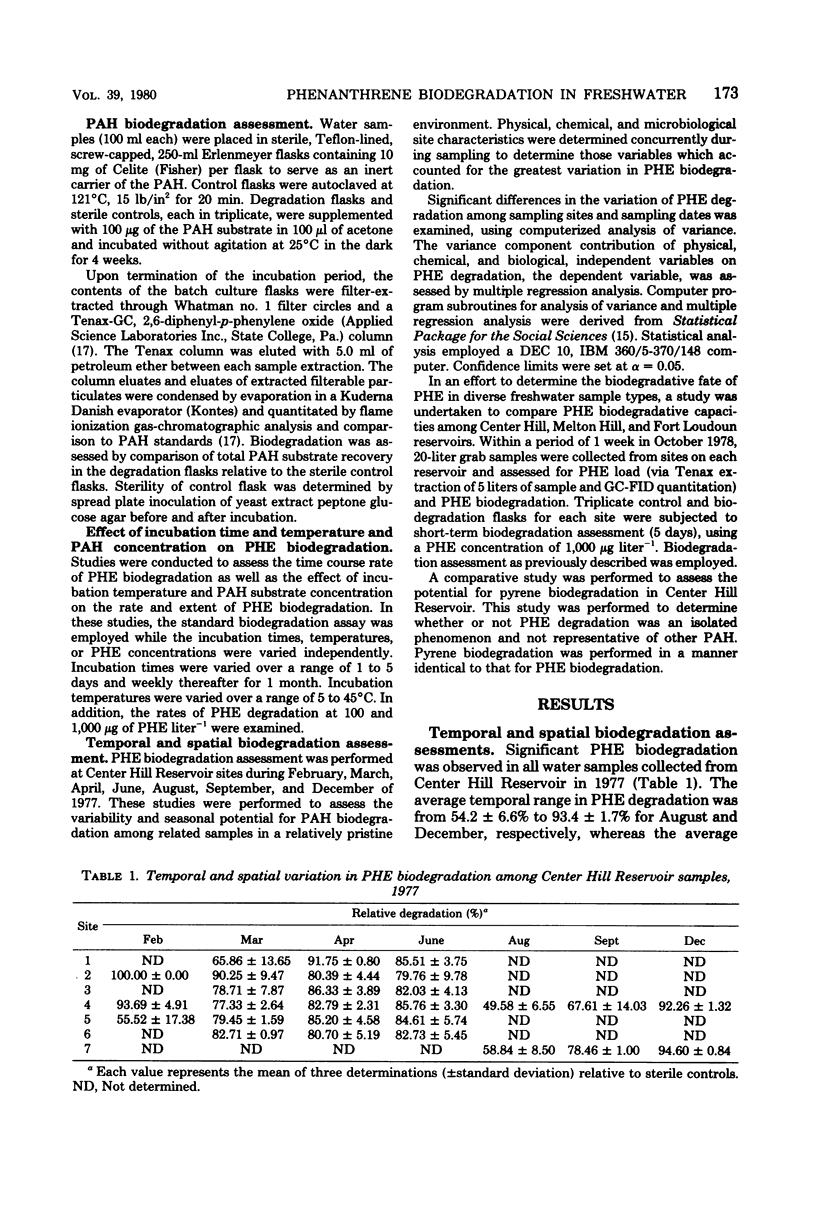
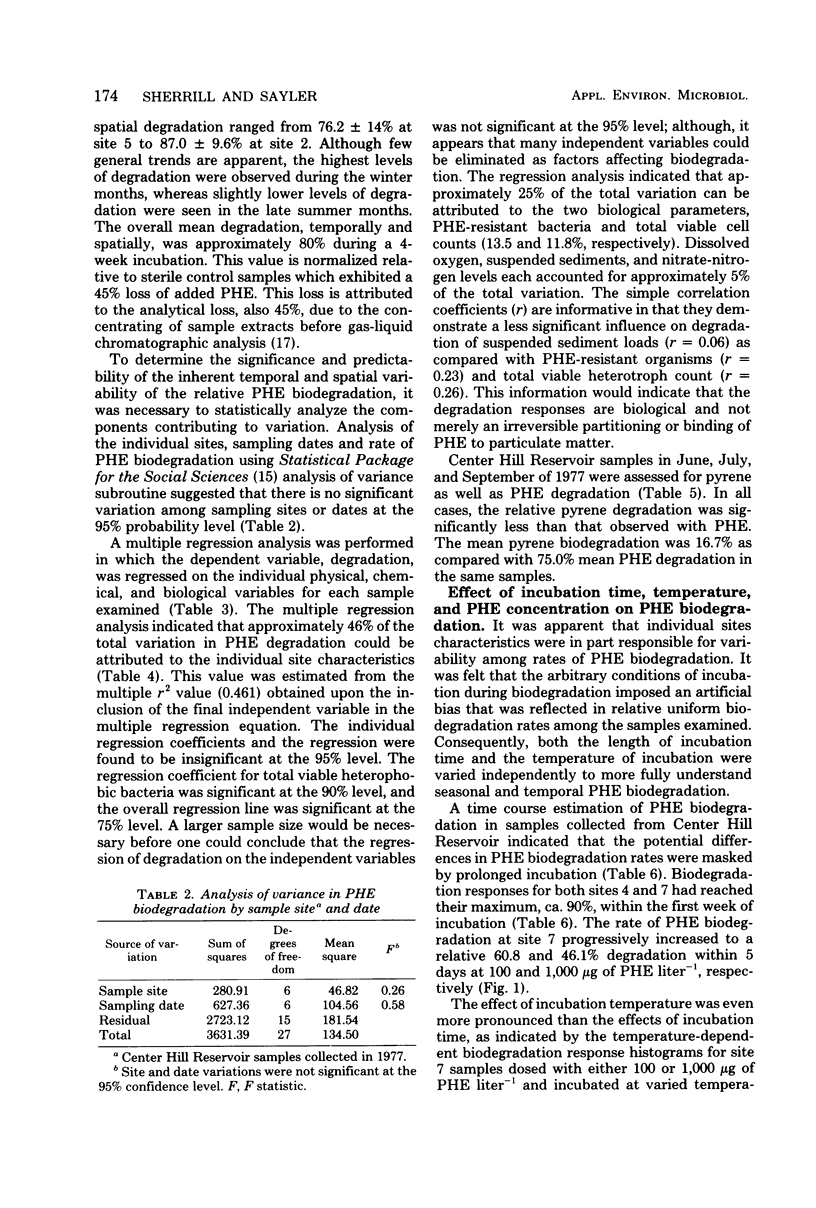

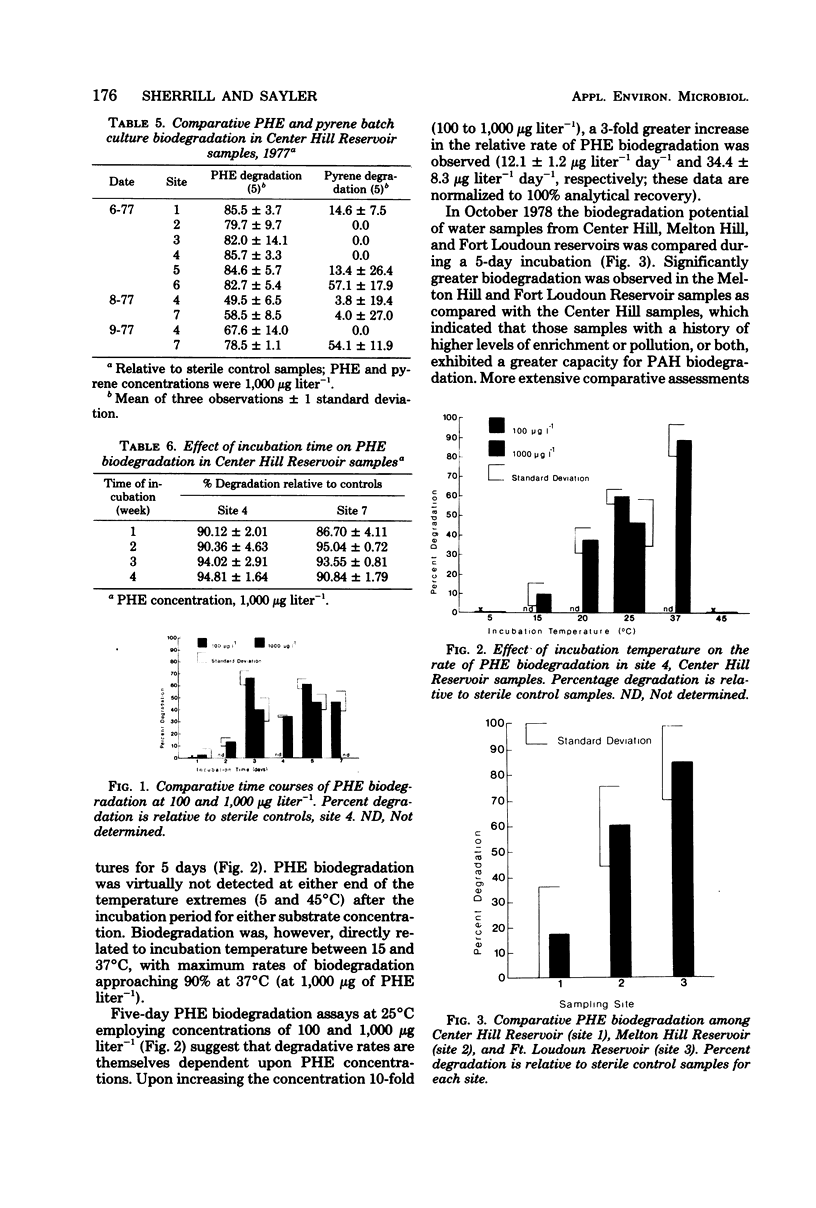
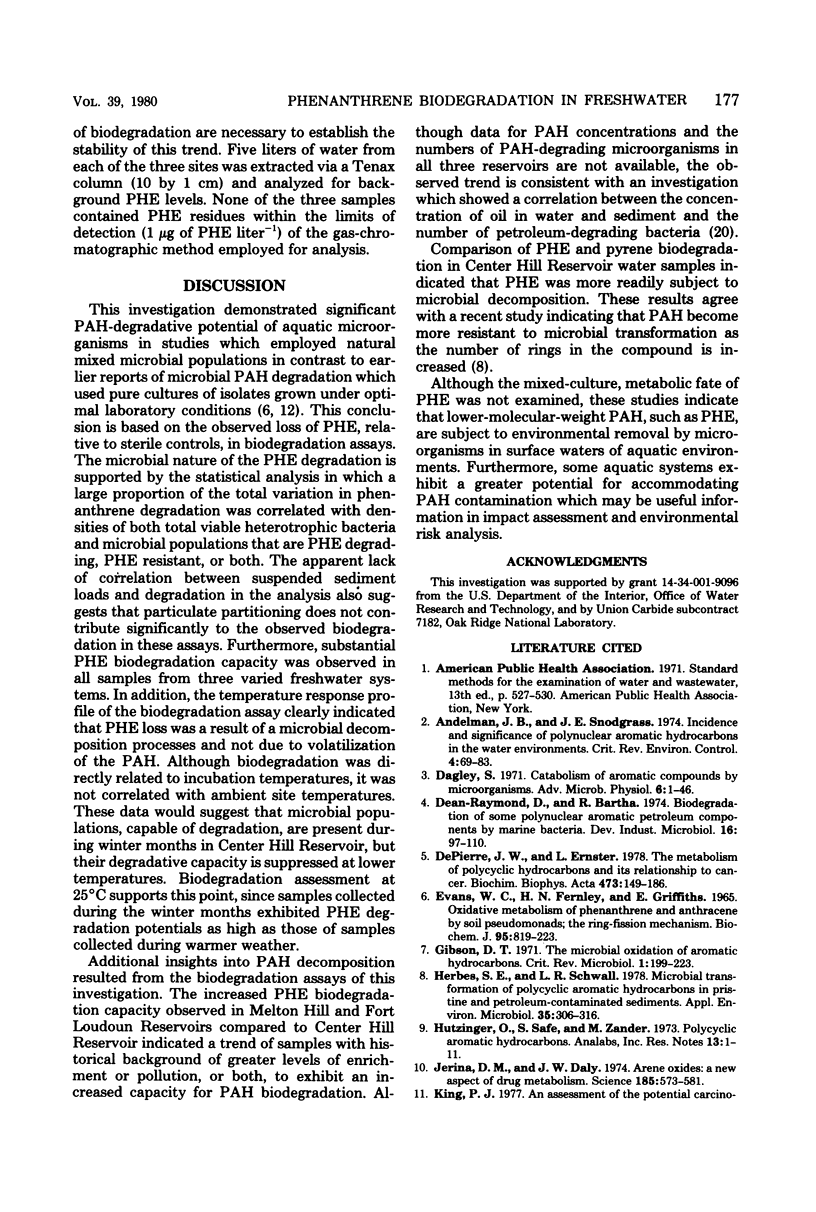
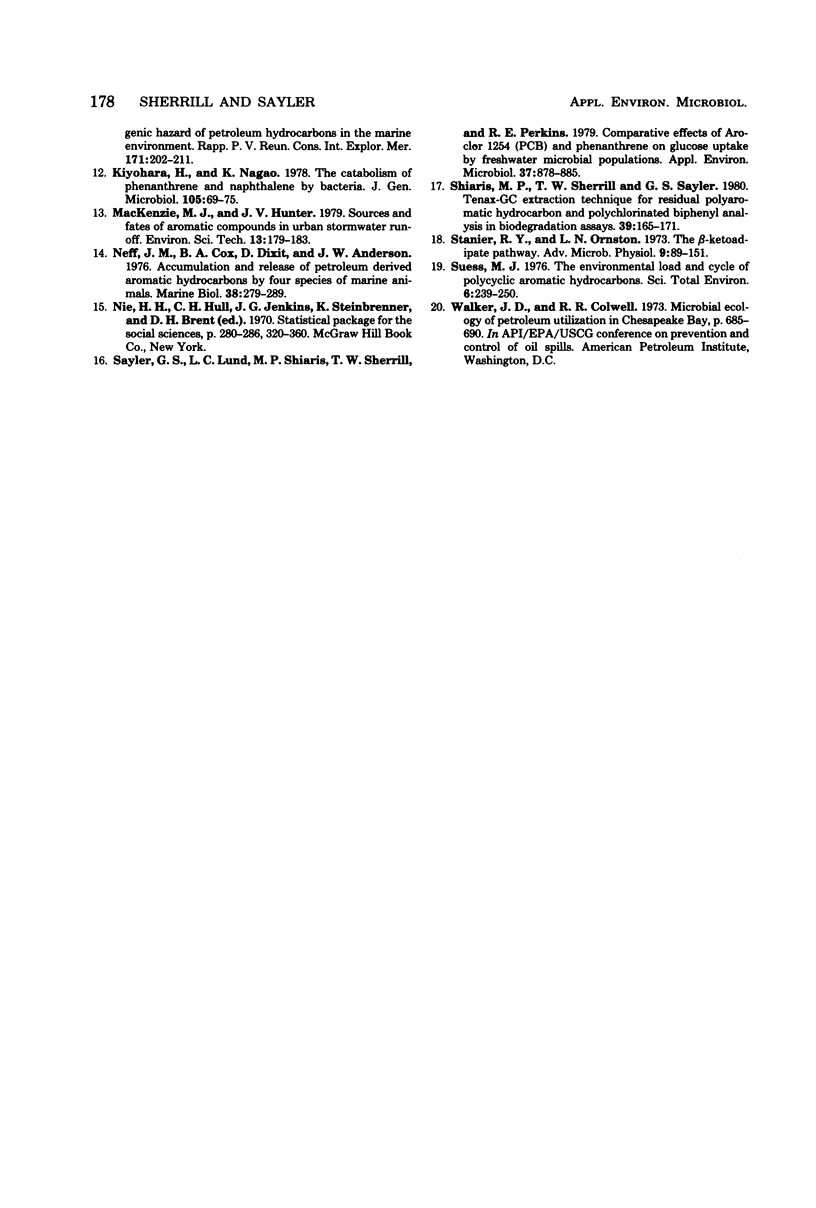
Selected References
These references are in PubMed. This may not be the complete list of references from this article.
- Dagley S. Catabolism of aromatic compounds by micro-organisms. Adv Microb Physiol. 1971;6(0):1–46. doi: 10.1016/s0065-2911(08)60066-1. [DOI] [PubMed] [Google Scholar]
- DePierre J. W., Ernster L. The metabolism of polycyclic hydrocarbons and its relationship to cancer. Biochim Biophys Acta. 1978 Apr 6;473(3-4):149–186. doi: 10.1016/0304-419x(78)90013-6. [DOI] [PubMed] [Google Scholar]
- EVANS W. C., FERNLEY H. N., GRIFFITHS E. OXIDATIVE METABOLISM OF PHENANTHRENE AND ANTHRACENE BY SOIL PSEUDOMONADS. THE RING-FISSION MECHANISM. Biochem J. 1965 Jun;95:819–831. doi: 10.1042/bj0950819. [DOI] [PMC free article] [PubMed] [Google Scholar]
- Herbes S. E., Schwall L. R. Microbial transformation of polycyclic aromatic hydrocarbons in pristine and petroleum-contaminated sediments. Appl Environ Microbiol. 1978 Feb;35(2):306–316. doi: 10.1128/aem.35.2.306-316.1978. [DOI] [PMC free article] [PubMed] [Google Scholar]
- Jerina D. M., Daly J. W. Arene oxides: a new aspect of drug metabolism. Science. 1974 Aug 16;185(4151):573–582. doi: 10.1126/science.185.4151.573. [DOI] [PubMed] [Google Scholar]
- Sayler G. S., Lund L. C., Shiaris M. P., Sherrill T. W., Perkins R. E. Comparative effects of Aroclor 1254 (polychlorinated biphenyls) and phenanthrene on glucose uptake by freshwater microbial populations. Appl Environ Microbiol. 1979 May;37(5):878–885. doi: 10.1128/aem.37.5.878-885.1979. [DOI] [PMC free article] [PubMed] [Google Scholar]
- Shiaris M. P., Sherrill T. W., Sayler G. S. Tenax-GC Extraction Technique for Residual Polychlorinated Biphenyl and Polyaromatic Hydrocarbon Analysis in Biodegradation Assays. Appl Environ Microbiol. 1980 Jan;39(1):165–171. doi: 10.1128/aem.39.1.165-171.1980. [DOI] [PMC free article] [PubMed] [Google Scholar]
- Stanier R. Y., Ornston L. N. The beta-ketoadipate pathway. Adv Microb Physiol. 1973;9(0):89–151. [PubMed] [Google Scholar]


